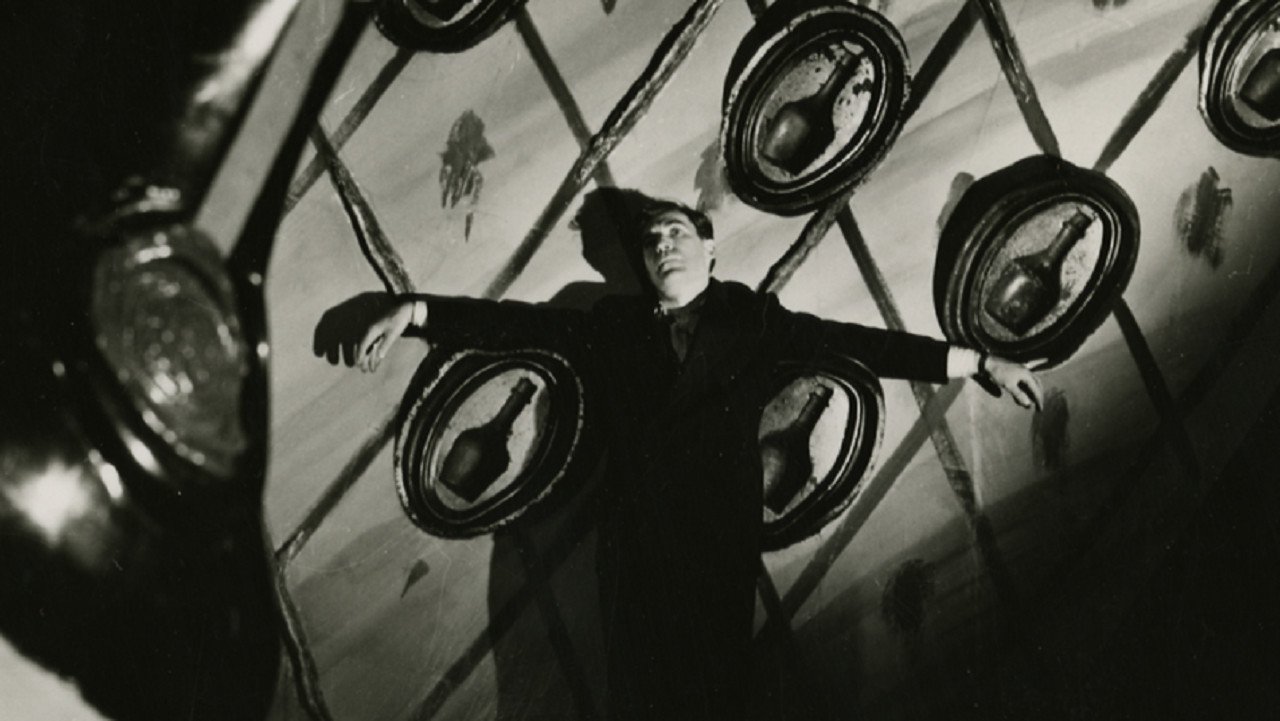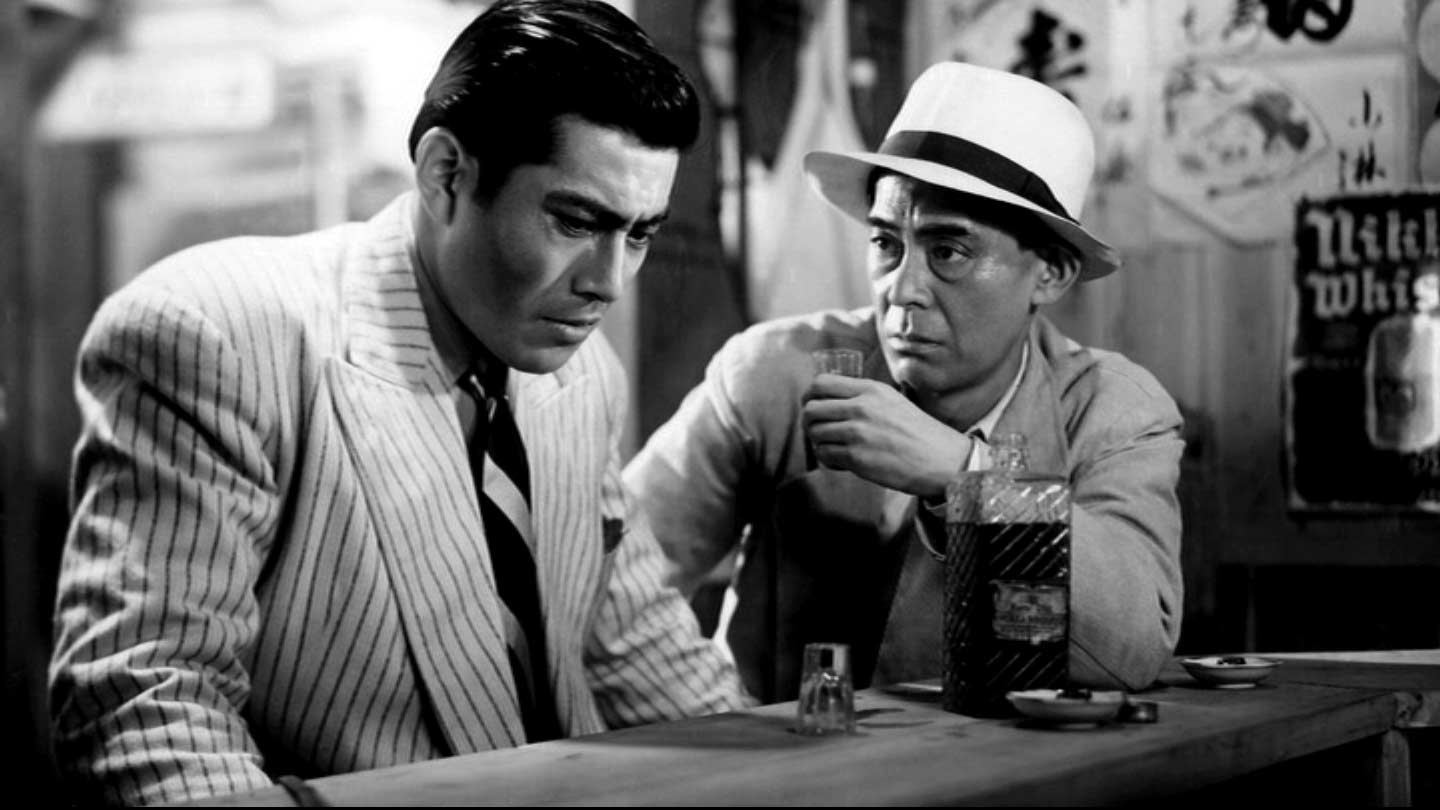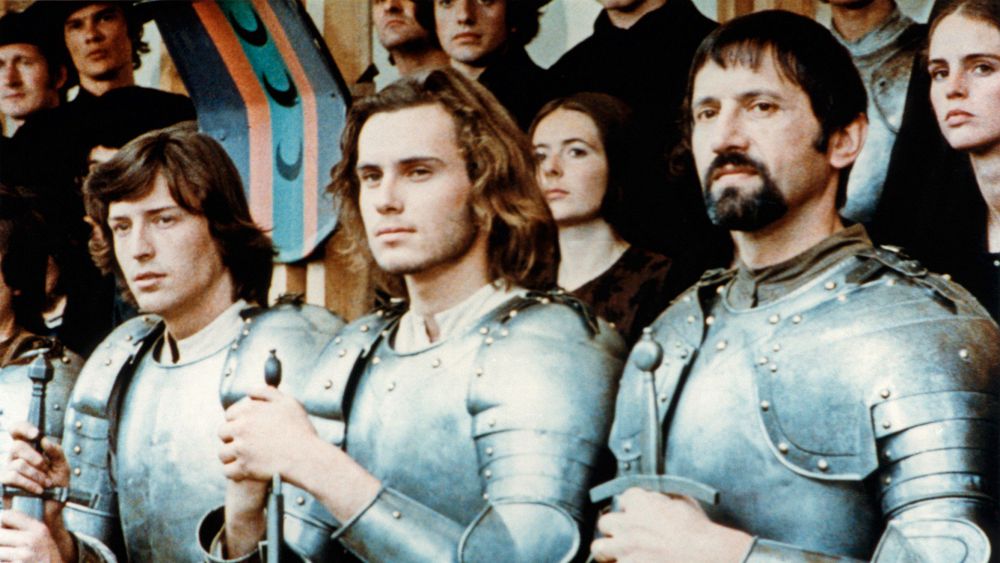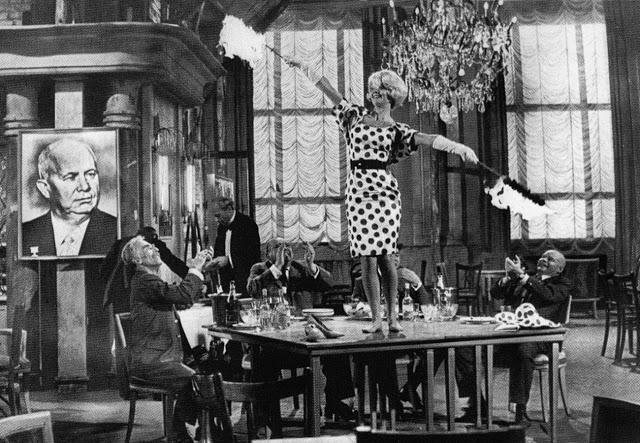5. The Small Back Room (1949), directed by Powell & Pressburger

After the Technicolor extravagance of “Black Narcissus” and “The Red Shoes,” Powell and Pressburger (known together as The Archers) returned to black-and-white for this relatively understated drama set during World War II in London.
The film is about Sammy Rice, one of the “back room boys” who carry out scientific research for the military. More specifically, the film is about Rice’s conflict with anything in a bottle – whether it be whiskey or German bombs concealed in thermoses.
Rice has an artificial foot, and the prescribed painkillers are ineffective, so he has taken to alcohol as a form of self-medication. Powell and Pressburger find innovative ways to portray Rice’s addiction, from a surrealist waking dream filled with ticking clocks to a scene where Rice has to dismantle an explosive bottle.
The vivid colors of the previous few Archers films are certainly gone here, but black-and-white perfectly suits the somberness of the story, with the camera dollying elegantly through the dimly lit rooms in which most of the film takes place. Powell and Pressburger often frame the faces of their characters in partial shadow, to the extent that Rice seems out-of-place when he appears in broad daylight.
While there are echoes of Wilder’s “The Lost Weekend” in Rice’s struggle, the film is more about self-pity than alcoholism; Rice’s girlfriend Susan is more frustrated by his self-destructive tendencies than by his drunkenness itself.
Although there are broader thematic concerns (such as the tendency of officials to make decisions based on statistics rather than actual observation), Rice’s personal battles are the core of the film. “The Small Back Room” is an intelligent and occasionally suspenseful study of self-pity that earns a place as one of the five or so best Archers productions.
4. Drunken Angel (1948), directed by Akira Kurosawa

Kurosawa’s first collaboration with Toshiro Mifune is the story of a troubled friendship between Sanada, an alcoholic doctor; and Matsunaga, a gangster with tuberculosis. When Matsunaga’s former yakuza boss Okada is released from prison, tensions begin to build.
While Kurosawa’s style here is not quite as refined as in his later films, his exceptional blocking and spatial awareness are readily apparent. Both the camera and the cast move with precision; physicality feels just as important as dialogue.
One memorable scene is a knife fight full of mirrors, coughed-up blood, canted angles, and dynamic cuts on action. It’s not quite as polished as a fight scene from “Seven Samurai” or “Yojimbo,” but it demonstrates what a good action director Kurosawa will become.
The postwar setting of the film allows for subtle critiques of the American occupation, but the self-destructiveness of the central characters – especially Matsunaga – is ultimately the film’s driving force. Disease and alcoholism play a role in Matsunaga’s inner turmoil, but his connection to the yakuza is an equally harmful habit.
Kurosawa prominently features a cesspool at the center of the town, and while it carries some metaphoric meaning about the American occupation, it also represents the despondency from which Matsunaga cannot escape.
3. Lancelot of the Lake (1974), directed by Robert Bresson

Count up the shots that focus on horses, and you can already tell that this is exactly the Arthurian movie the director of “Au Hasard Balthazar” would make. Some argue that Bresson’s style does not translate well to Camelot, but I would contend that this seeming misalignment of style and setting is completely in harmony with the film’s message.
The violence – especially in the opening excerpts of the quest for the Grail – is clunky and almost awkwardly filmed, draining away the excitement and valor we usually associate with medieval swordplay.
In Bresson’s Camelot, chivalry is a failed enterprise. The knights do not recover the Grail, and their unsuccessful quest is nothing but a brief prelude to the games of jealousy and pointless violence that await them back at Camelot. The key plot point is Lancelot’s affair with Queen Guinevere, which angers King Arthur and results in bloodshed and the loss of all trust.
Bresson’s cinematography continually emphasizes limbs in motion, distancing movement from its originator. We stop thinking about the characters involved and instead see only needless violence, as in the jousting sequence, where blaring bagpipes and waving flags form a rhythm that underscores the repetitiveness and futility of ritualized killing and injury.
2. One, Two, Three (1961), directed by Billy Wilder

C.R. “Mac” MacNamara is a Coca-Cola executive stationed in West Berlin. His boss’s seventeen-year-old daughter Scarlett (who becomes the catalyst for many “Gone With the Wind” references) arrives to stay with him and his family, and he must figure out how to prevent her romance with an East German Communist – or maybe just how to sell the union to her father.
The satire is unrelenting here as the film makes fun of Communists and capitalists alike. For instance, the Russians want the United States’ Coca-Cola recipe, making for a sort of carbonated Cold War. Scarlett’s lover Otto spouts plenty of hyperbolic Communist notions, but the capitalist makeover Mac ends up giving Otto is just as hyperbolized: Otto has to wear very specific clothes and conform to ridiculous upper-class ideals.
“One, Two, Three” is certainly not Wilder’s most neglected film, but it is the film most unfairly left out his most famous work. It’s no “Sunset Boulevard,” but it’s better than his Best Picture winner “The Lost Weekend,” and it’s a hell of a lot better than “The Seven Year Itch,” even if it doesn’t contain any images as iconic as Marilyn Monroe and the subway grate.
No, “One, Two, Three” probably does not deserve to be mentioned in the same sentence with Kubrick’s “Dr. Strangelove,” which I have just made the error of doing. But few political comedies do deserve that honor, and “One, Two, Three” is one of the best Cold War satires out there.
1. Ivan’s Childhood (1962), directed by Andrei Tarkovsky

Tarkovsky is so legendary that none of his films are completely overlooked (with “Nostalgia” coming the closest), but I include “Ivan’s Childhood” because I think it deserves to be in the running as his absolute best film, an honor which is most often conferred upon “Andrei Rublev” or “Mirror” or “Stalker.”
Ivan is a precocious twelve-year-old scout for the Soviet army, and he possesses maturity and competency well beyond his years, sometimes demonstrating a parental sort of concern for others. His childhood is practically a thing of the past, revisited only in flashbacks.
As Ivan drifts into these memories or even into fantasies, the camera generally stays rooted in his perspective, moving much more freely and subjectively than in Tarkovsky’s later films. No prolonged static shots of fields here. Make no mistake though, “Ivan’s Childhood” is just as gorgeous as anything else in Tarkovsky’s canon. The compositions here contain striking chiaroscuro that is often structured around visual symbols like fire and water.
What sets “Ivan’s Childhood” apart from Tarkovsky’s other films most of all is the persistent focus on Ivan and his perspective. In some of Tarkovsky’s long, ambitious works such as “The Sacrifice” or “Solaris,” human characters can begin to feel like mere conduits for grand philosophical ponderings. But here, Tarkovsky lets Ivan himself take precedence over any overarching themes.
The result is an astoundingly compassionate and visually captivating war film, arguably one of the best war films ever made. The last scene in particular is an absolute triumph of filmmaking.
Author Bio: Nathan Quick is an English major pursuing a career in filmmaking and writing. He believes that watching good films is an essential step toward making good films.